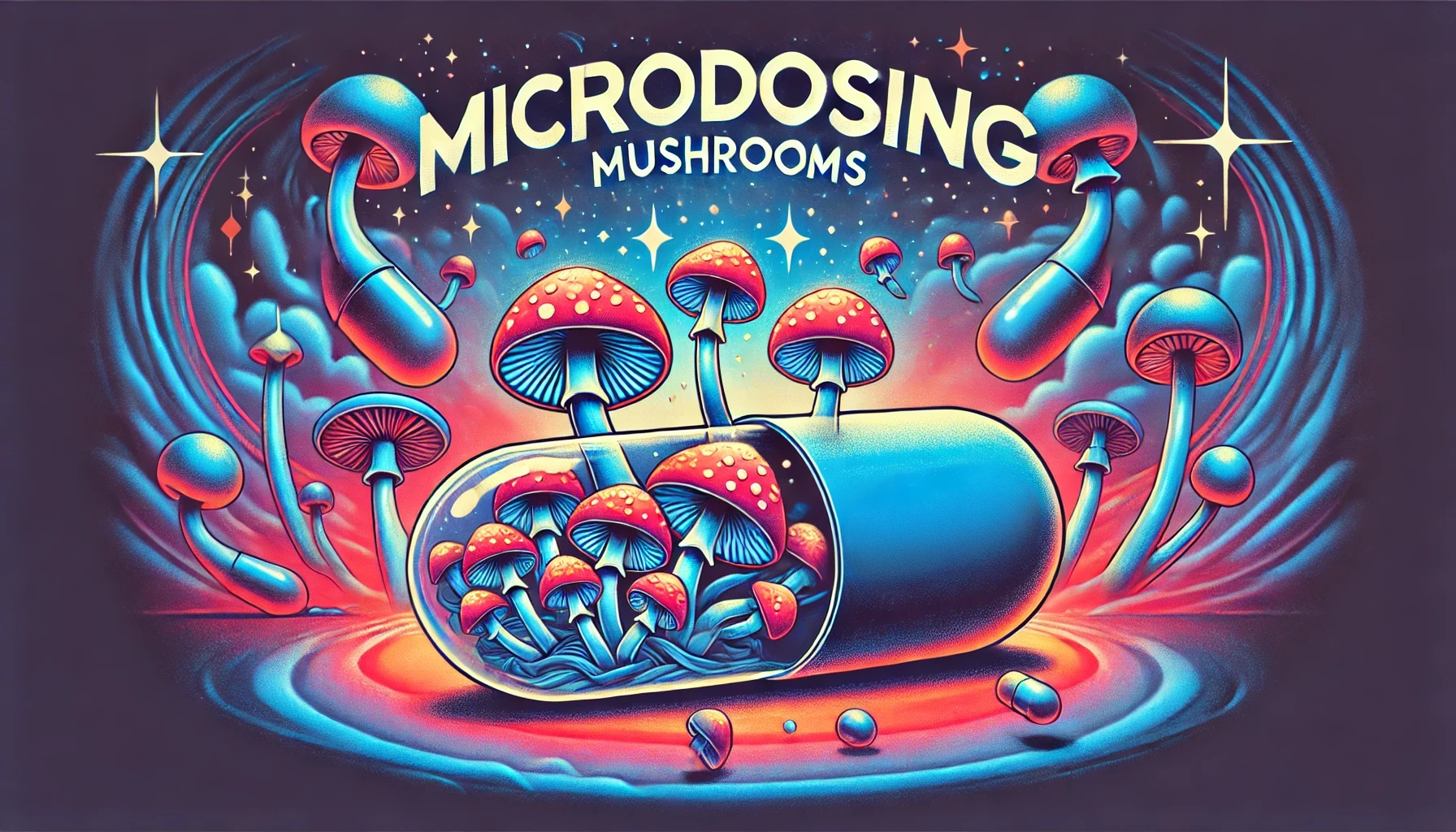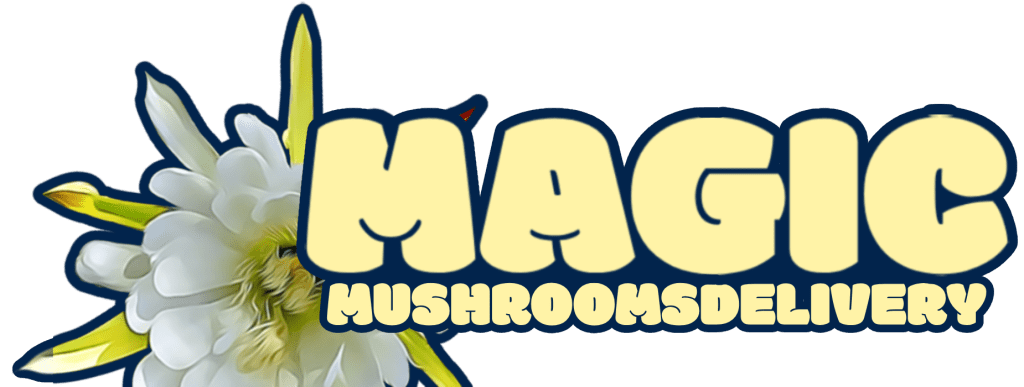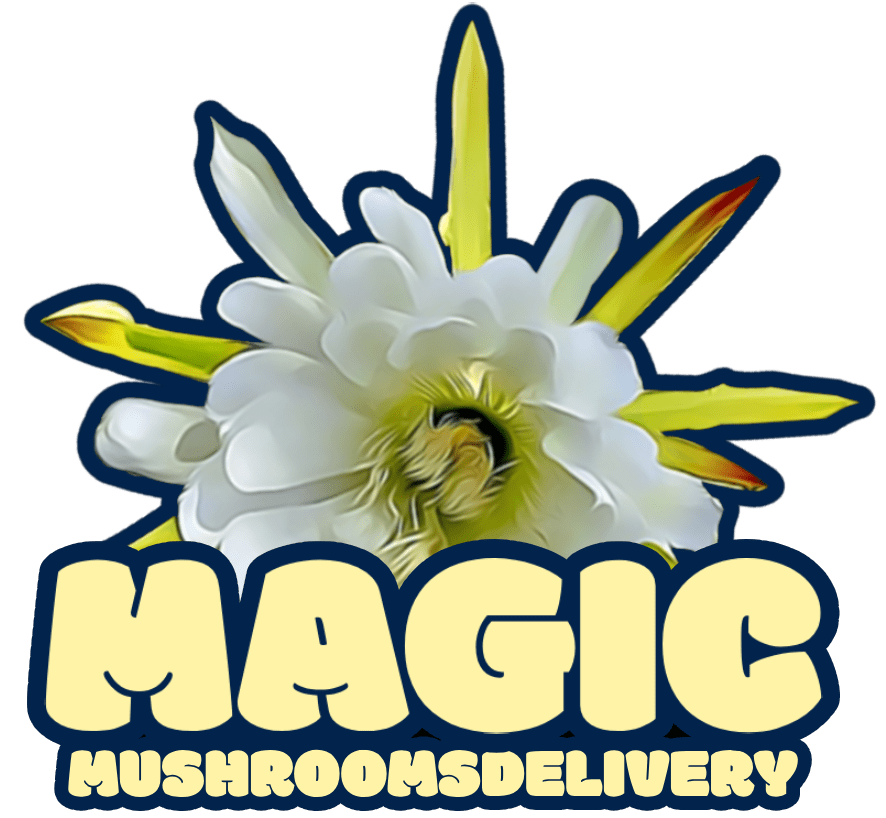

The Benefits of Microdosing Magic Mushrooms
Microdosing mushrooms has truly stepped out of the psychedelic underground and into everyday conversations. This practice involves taking tiny, almost imperceptible amounts of psilocybin mushrooms, so you don’t get high. Instead, you can enjoy many of the same benefits that people seek from cannabis—like improved mood and creativity—without needing to experience a high to make progress.
It’s no surprise that researchers, entrepreneurs, and anyone looking to boost their mental well-being and enhance their cognitive performance are taking notice.
We’ll explore the potential benefits and risks of mushroom microdosing, along with the science behind this fascinating trend. But first, here are some key discoveries that have brought microdosing into the spotlight: And if you want to skip the education and get right to the good stuff, buy quality mushroom microdose capsules here.
Why Microdosing Mushrooms Is Important:
- Mood Enhancement: Many users report improved mood and reduced symptoms of depression and anxiety.
- Cognitive Boost: Increased focus, creativity, and problem-solving abilities are commonly cited benefits.
- Neuroplasticity: Research suggests psilocybin may promote neural connections and brain plasticity.
- Minimal Side Effects: When done correctly, microdosing appears to have fewer side effects than traditional psychedelic use.
- Growing Scientific Interest: An increasing number of studies are investigating the potential therapeutic applications of psilocybin.
- Clinical Benefits: Microdosing has been clinically proven to help reduce stress, depression, and assist with other medical ailments when traditional methods are not working.
Now, let’s embark on a journey through the fascinating world of microdosing mushrooms, examining its history, science, potential benefits, and the controversies surrounding this practice.
What is Microdosing Mushrooms?
Microdosing mushrooms refers to the practice of consuming very small, sub-perceptual doses of psilocybin-containing mushrooms on a regular schedule. Unlike traditional psychedelic experiences, the goal of microdosing is not to induce hallucinations or profound alterations in consciousness. Instead, users aim to experience subtle improvements in mood, cognition, and overall well-being.
The concept of microdosing gained popularity in the early 2010s, largely thanks to the work of Dr. James Fadiman, who outlined a protocol for microdosing in his book “The Psychedelic Explorer’s Guide.” However, the use of psychedelics in small doses for medicinal or spiritual purposes has roots in various indigenous cultures around the world.
While recreational use of magic mushrooms typically involves consuming several grams of dried mushrooms to induce a powerful psychedelic experience, microdosing involves taking just a fraction of this amount—usually between 0.1 to 0.5 grams. This tiny dose is intended to be below the threshold of perceptual effects, allowing users to go about their daily lives without impairment.
The amount of mushrooms needed for a microdose is strongly dependent on your body and health. Important factors include body weight, metabolism, how you’re dosing, and various other inputs that we have outlined on our mushroom dosage calculator page.
The most common mushrooms used for microdosing are species of the genus Psilocybe, particularly Psilocybe cubensis. These mushrooms contain psilocybin, which is converted to psilocin in the body—the compound responsible for the psychoactive effects.
The Science Behind Microdosing Mushrooms
To understand how microdosing mushrooms might affect the brain, we need to dive into the science of psilocybin. Here are two key elements of magic mushrooms that influence your microdosing experience:
- Psilocybin Conversion: Psilocybin is a prodrug that is rapidly converted to psilocin in the body.
- Serotonin Similarity: Psilocin is structurally similar to serotonin, a neurotransmitter involved in mood regulation, cognition, and perception.
When psilocin enters the brain, it primarily acts on serotonin 2A receptors (5-HT2A). This interaction leads to a cascade of effects, including:
- Altered Neurotransmitter Release
- Changes in Brain Network Connectivity
- Increased Neuroplasticity
- Modulation of the Default Mode Network (DMN)
One of the most intriguing aspects of psilocybin’s effects is its potential to promote neuroplasticity—the brain’s ability to form new neural connections and reorganize existing ones. A study published in Cell Reports found that psilocybin and other psychedelics promoted the growth of neural connections both in vitro and in vivo.
This increased neuroplasticity may underlie some of the long-term benefits reported by microdosers, such as improved mood and cognitive function. However, it’s important to note that most research on psilocybin has been conducted using full doses, and the effects of microdoses may differ significantly.
Current research on microdosing is still in its early stages, with most evidence being anecdotal or from small-scale studies. However, interest in this area is growing rapidly, with several ongoing clinical trials investigating the potential therapeutic applications of psilocybin for conditions such as depression, anxiety, and addiction.
Potential Benefits of Microdosing Mushrooms
The reported benefits of microdosing mushrooms are diverse and wide-ranging. While more research is needed to confirm these effects, many users report significant improvements in various aspects of their mental health and cognitive function.
Mental Health Improvements
- Depression and Anxiety Relief: Many microdosers report a lifting of depressive symptoms and a reduction in anxiety. A study published in the journal Nature found that psilocybin, even in larger doses, produced rapid and sustained antidepressant effects in patients with treatment-resistant depression.
- PTSD Management: Some individuals with post-traumatic stress disorder (PTSD) have reported benefits from microdosing mushrooms, including reduced symptoms and improved ability to process traumatic memories. However, more research is needed in the area of PTSD relief.
Cognitive Enhancement
- Increased Focus and Concentration: Many users report improved ability to concentrate on tasks and maintain focus throughout the day. This effect may be related to psilocybin’s impact on brain network connectivity.
- Enhanced Problem-Solving Skills: Some microdosers claim that the practice helps them approach problems from new angles and find creative solutions more easily. This could be linked to the increased neural plasticity observed in psilocybin studies.
Creativity Boost
One of the most commonly reported benefits of microdosing is enhanced creativity. Users often describe feeling more open to new ideas, experiencing more frequent “eureka” moments, and having an easier time thinking outside the box.
Improved Mood and Emotional Well-Being
Many microdosers report a general improvement in mood, describing feelings of optimism, emotional balance, and increased empathy. These effects may be related to psilocybin’s impact on serotonin receptors and its potential to modulate the default mode network, which is involved in self-referential thinking and rumination.
Risks of Microdosing Magic Mushrooms
While microdosing mushrooms appears to have potential benefits, it’s crucial to consider the risks and potential side effects associated with this practice.
Short-Term Side Effects
Some users report experiencing:
- Mild Anxiety or Restlessness
- Slight Changes in Perception
- Gastrointestinal Discomfort
- Sleep Disturbances
- Headaches
Potential Long-Term Risks
The long-term effects of regular microdosing are not well understood. Some concerns include:
- Potential Heart Valve Issues: Due to 5-HT2B receptor activation.
- Unknown Effects on Brain Chemistry: Prolonged use may have unforeseen impacts.
- Possible Psychological Dependence
Legal Considerations
Psilocybin is classified as a Schedule I substance in many countries, including the United States. Possession and use of psilocybin mushrooms are illegal in most jurisdictions, although some cities and states have decriminalized or are considering decriminalization.
Interactions with Medications and Pre-Existing Conditions
Psilocybin can interact with certain medications, particularly those that affect serotonin levels (like SSRIs). It may also exacerbate symptoms in individuals with certain mental health conditions, such as schizophrenia or bipolar disorder.
How to Microdose Mushrooms: Step-by-Step Guide
If you’re considering microdosing mushrooms, it’s essential to approach the practice with caution and respect. Here’s a step-by-step guide to help you get started:
- Research and Educate Yourself:
- Understand the benefits, risks, and legal implications.
- Consult with a healthcare professional, especially if you have pre-existing conditions or are taking medications.
- Determine the Right Dosage:
- Start with a low dose, typically between 0.1 to 0.5 grams of dried Psilocybe mushrooms.
- Adjust gradually based on your body’s response.
- Choose Your Microdosing Protocol:
- Select a schedule that suits your lifestyle and goals (e.g., Fadiman Protocol, Stamets Stack).
- Prepare Your Dose:
- Weigh your mushrooms accurately using a milligram scale.
- Decide on your method of consumption (capsules, tea, etc.).
- Track Your Progress:
- Keep a detailed journal of your dosing schedule, effects, and any side effects.
- Monitor changes in mood, cognition, and overall well-being.
- Incorporate Breaks:
- Follow a schedule that includes regular breaks to prevent tolerance buildup and assess your progress.
- Adjust as Needed:
- Fine-tune your dosage and schedule based on your experiences and observations.
- Prioritize Safety:
- Source your mushrooms from reputable suppliers.
- Ensure you’re in a safe and comfortable environment during and after dosing.
Ways to Microdose Mushrooms
There are several methods to microdose mushrooms, each with its own set of advantages. Here are the most common ways:
1. Microdose Capsules
Description: Capsules are filled with powdered mushrooms, making them easy to consume and dose accurately.
Advantages:
- Precise dosing
- Convenient and portable
- Tasteless and odorless
Considerations:
- Requires access to a milligram scale and capsule-filling equipment or pre-made capsules from a reliable source.
2. Mushroom Tea
Description: Brewing dried mushrooms into a tea can make consumption easier and reduce the earthy taste.
Advantages:
- Faster absorption into the bloodstream
- Easier on the stomach for some users
- Customizable flavor with herbs or spices
Considerations:
- Requires preparation time
- Potency can vary based on brewing time and temperature
3. Raw Dried Mushrooms
Description: Consuming raw dried mushrooms is the most straightforward method.
Advantages:
- No additional preparation needed
- Immediate effects
Considerations:
- Strong, earthy taste that some may find unpleasant
- Less precise dosing without proper tools
4. Tinctures or Extracts
Description: Tinctures or extracts involve soaking mushrooms in alcohol or another solvent to extract the active compounds.
Advantages:
- Long shelf life
- Easy to dose with a dropper
- Less taste compared to raw mushrooms
Considerations:
- Requires preparation or purchasing from a reputable source
- Potency can vary
Factors Affecting Your Microdose
Several factors can influence the effectiveness and experience of microdosing mushrooms:
When to Take Your Microdose
- Time of Day: Many users prefer taking their microdose in the morning to enhance productivity and mood throughout the day.
- Consistency: Taking your dose at the same time each day helps maintain a steady routine and observe consistent effects.
Environment
- Setting: Being in a comfortable and familiar environment can enhance the positive effects and reduce any potential anxiety.
- Activities: Engaging in creative or focused tasks can maximize the cognitive and creative benefits of microdosing.
Personal Health Factors
- Body Weight and Metabolism: These can affect how your body processes psilocybin, influencing the optimal dose.
- Diet and Hydration: Maintaining a healthy diet and staying hydrated can support overall well-being and the effectiveness of microdosing.
Combining with Other Practices
- Meditation and Mindfulness: These can amplify the introspective qualities of microdosing.
- Exercise: Regular physical activity promotes neuroplasticity and overall health, complementing the cognitive benefits of microdosing.
Alternatives to Microdosing Mushrooms
For those interested in the potential benefits of microdosing but hesitant about using psilocybin mushrooms, there are several alternatives to consider:
Other Psychedelic Substances for Microdosing
- LSD (Lysergic acid diethylamide)
- Mescaline (from peyote or San Pedro cacti)
- DMT (N,N-Dimethyltryptamine)
Non-Psychedelic Alternatives for Similar Benefits
- Lion’s Mane Mushroom: Known for cognitive enhancement.
- Ashwagandha: Used for stress relief and cognitive function.
- Rhodiola Rosea: Supports mood and energy levels.
- Meditation and Mindfulness Practices: Enhance mental clarity and emotional balance.
Lifestyle Changes and Holistic Approaches
- Regular Exercise: Promotes overall health and neuroplasticity.
- Healthy Diet: Rich in omega-3 fatty acids and antioxidants supports brain health.
- Adequate Sleep: Essential for cognitive function and emotional regulation.
- Stress Management Techniques: Helps maintain mental well-being.
- Cognitive Behavioral Therapy (CBT): Addresses negative thought patterns and behaviors.
Charting the Course: The Future of Microdosing
As we’ve explored, microdosing mushrooms is a complex and multifaceted topic that sits at the intersection of neuroscience, psychology, and cultural shifts in our approach to mental health and personal growth. While the potential benefits are intriguing, it’s clear that we’re still in the early stages of understanding the full implications of this practice.
Future Research and Possibilities
The future of microdosing research holds exciting possibilities. As more clinical trials are conducted and our understanding of psychedelic compounds deepens, we may uncover new therapeutic applications and gain insights into the mechanisms behind the reported benefits.
Balanced Perspective
However, it’s crucial to approach this topic with a balanced perspective. The enthusiasm surrounding microdosing should be tempered with caution and respect for the power of these substances. As individuals and as a society, we must navigate the ethical, legal, and health considerations carefully.
Embracing Diverse Paths to Well-Being
Whether through microdosing, traditional therapies, or holistic lifestyle changes, the path to improved well-being is as diverse as humanity itself. As we continue to explore these frontiers, may we do so with open minds, critical thinking, and a commitment to understanding the full spectrum of human consciousness and potential.
Disclaimer: This article is for informational purposes only and does not constitute medical advice. Psilocybin is classified as a controlled substance in many jurisdictions, and its possession or use may be illegal. Always consult with a healthcare professional before starting any new treatment or wellness regimen, and be aware of the legal status of substances in your area.
Christina Perrows
Table of Contents
Canada’s Mushroom Dispensary
Calgary
We deliver magic mushrooms same day in Calgary. Enjoy quick delivery within 60 minutes anywhere within city limits between 10am and 9pm daily.
Canada
Canada's magic mushroom delivery service. We bring shrooms to your place in 1 - 4 days depending where you are in Canada. Shrooms near me? We have you covered.
Be first on the list to get notified about our sales, new genetics and drops before they sell out!

